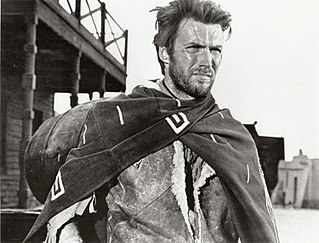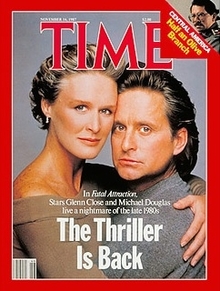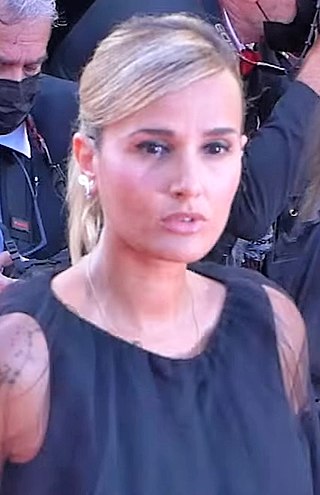
Cyberpunk is a subgenre of science fiction in a dystopian futuristic setting that tends to focus on a "combination of lowlife and high tech", featuring futuristic technological and scientific achievements, such as artificial intelligence and cyberware, juxtaposed with societal collapse, dystopia or decay. Much of cyberpunk is rooted in the New Wave science fiction movement of the 1960s and 1970s, when writers like Philip K. Dick, Michael Moorcock, Roger Zelazny, John Brunner, J. G. Ballard, Philip José Farmer and Harlan Ellison examined the impact of drug culture, technology, and the sexual revolution while avoiding the utopian tendencies of earlier science fiction.

A film genre is a stylistic or thematic category for motion pictures based on similarities either in the narrative elements, aesthetic approach, or the emotional response to the film.

Gothic fiction, sometimes called Gothic horror, is a loose literary aesthetic of fear and haunting. The name refers to Gothic architecture of the European Middle Ages, which was characteristic of the settings of early Gothic novels.

Horror is a film genre that seeks to elicit fear or disgust in its audience for entertainment purposes.
A hybrid genre is a literary or film genre that blends themes and elements from two or more different genres. Works in hybrid genres are also referred to as cross-genre, multi-genre, mixed genre, or fusion genre. The Dictionary of Media and Communication describes hybrid genre as "the combination of two or more genres", which may combine elements of more than one genre and/or which may "cut across categories such as fact and fiction". Some such sub-genres have acquired their own specialised names, such as comedy drama, romantic comedy ("rom-com"), horror Western, and docudrama.

Tentacle erotica is a type of pornography most commonly found in Japan that integrates traditional pornography with elements of bestiality, fantasy, horror, and science fiction. It is found in some horror or hentai titles, with tentacled creatures having sexual intercourse, predominantly with females or, to a lesser extent, males. Tentacle erotica can be consensual but mostly contains elements of rape.

A splatter film is a subgenre of horror films that deliberately focuses on graphic portrayals of gore and graphic violence. These films, usually through the use of special effects, display a fascination with the vulnerability of the human body and the theatricality of its mutilation. The term "splatter cinema" was coined by George A. Romero to describe his film Dawn of the Dead, though Dawn of the Dead is generally considered by critics to have higher aspirations, such as social commentary, than to be simply exploitative for its own sake.

An exploitation film is a film that tries to succeed financially by exploiting current trends, niche genres, or lurid content. Exploitation films are generally low-quality "B movies", though some set trends, attract critical attention, become historically important, and even gain a cult following.
Ero guro is an artistic genre that puts its focus on eroticism, sexual corruption, and decadence. As a term, it is used to denote something that is both erotic and grotesque.

Erotic horror, alternately called horror erotica or dark erotica, is a term applied to works of fiction in which sensual or sexual imagery are blended with horrific overtones or story elements for the sake of sexual titillation. Horror fiction of this type is most common in literature and film. Erotic horror films are a cornerstone of Spanish and French horror.

The erotic thriller or sexual thriller is a film subgenre defined as a thriller with a thematic basis in illicit romance or sexual fantasy. Though exact definitions of the erotic thriller can vary, it is generally agreed "bodily danger and pleasure must remain in close proximity and equally important to the plot." Most erotic thrillers contain scenes of softcore sex and nudity, though the frequency and explicitness of those scenes can differ from film to film.
Suburban Gothic is a subgenre of Gothic fiction, art, film and television, focused on anxieties associated with the creation of suburban communities, particularly in the United States and the Western world, from the 1950s and 1960s onwards.
Japanese cyberpunk refers to cyberpunk fiction produced in Japan. There are two distinct subgenres of Japanese cyberpunk: live-action Japanese cyberpunk films, and cyberpunk manga and anime works.

The representation of gender in horror films, particularly depictions of women, has been the subject of critical commentary.

Julia Ducournau is a French film director and screenwriter. She made her feature film debut in 2016 with Raw. At the 2021 Cannes Film Festival, she won the Palme d'Or for her film Titane, which made her the second female director to win the award as well as the first to win the award solo. Additionally, Ducournau also received a nomination for Best Director at the 75th British Academy Film Awards. Her films typically fall under the body horror genre.
Techno-horror is a subgenre of horror fiction that focuses on concerns with and fears of technology. The stories are often cautionary tales created during periods of rapid technological advancement that express concerns about privacy, freedom, individuality and wealth disparity. They often take place in dystopian settings.
Art horror or arthouse horror is a sub-genre of both horror films and art-films. It explores and experiments with the artistic uses of horror.











